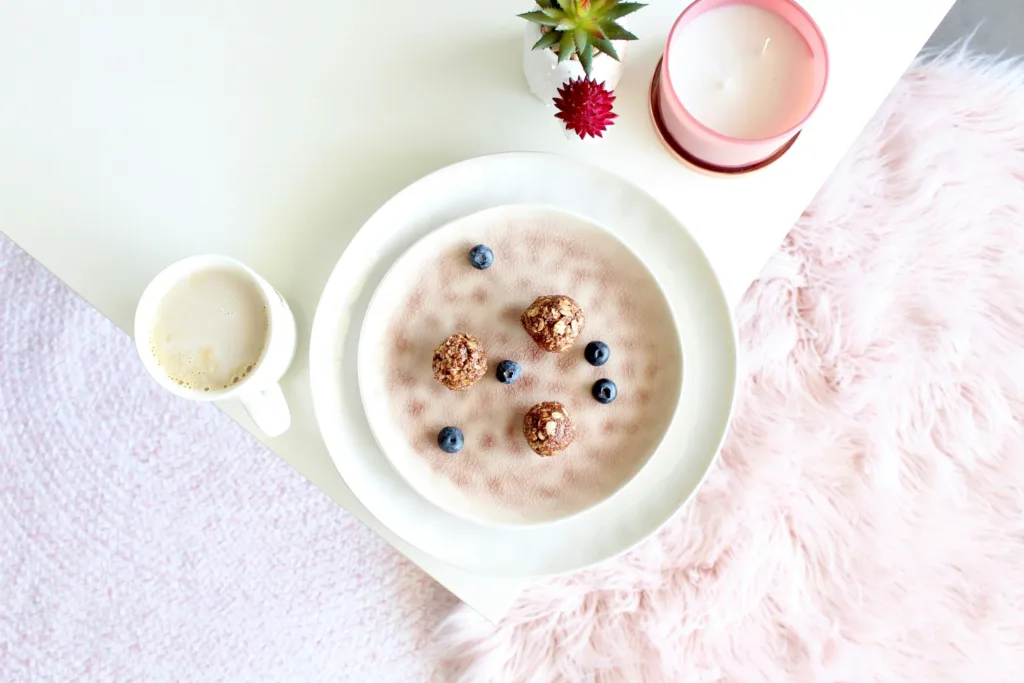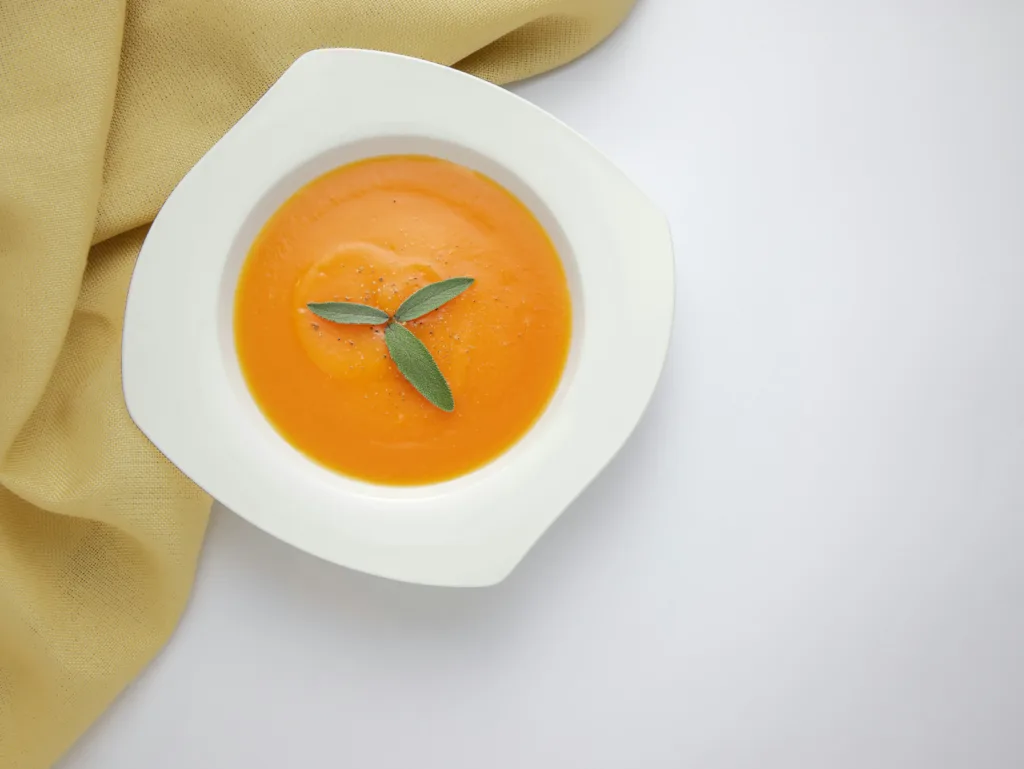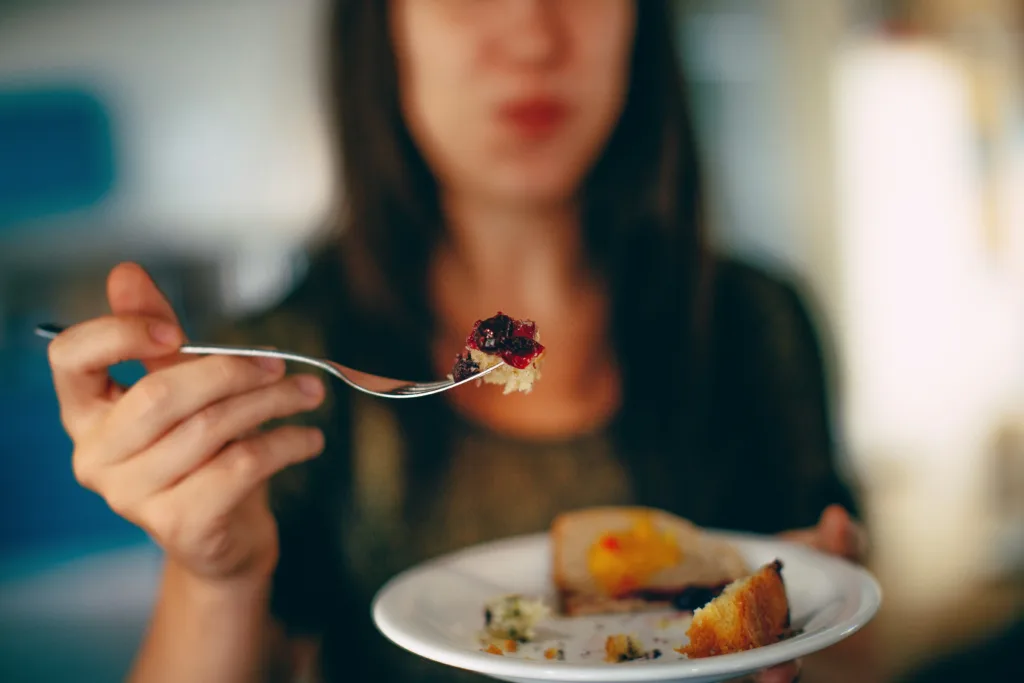Cancer treatment takes a lot out of you, physically and emotionally. Eating might be the last thing you feel like doing, especially with side effects like nausea, taste changes, or fatigue. But getting the right nutrients can help your body stay strong, support recovery, and even make treatments more manageable. This isn’t some fussy gourmet plan with 12-step recipes or unfamiliar ingredients. It’s a simple, real-world guide packed with practical, easy-to-eat meals that nourish without overwhelming you. Whether you’re the one going through treatment or caring for someone who is, this 7-day plan is designed to help you feel a little more in control, one meal at a time. Let’s break it down.
And if you’re looking for a little extra support along the way, we built ReciMe to make meal planning easier when life feels anything but. Whether you’re navigating cancer treatment yourself or caring for someone who is, we know how overwhelming food decisions can feel. That’s why we created a space where you can save recipes that actually work for you, build smart grocery lists in seconds, and organize meals based on real-life needs – not just what looks good on Instagram. ReciMe simplifies the everyday, and we’re proud to be a small part of making food feel a little more manageable during a really tough time.

Download for free from the App Store on iPhone and iPad

ReciMe Android App

Why Nutrition Is So Crucial During Treatment
Food does more than fuel your day. During cancer treatment, it helps your body hold on to muscle, manage side effects, and recover from the physical toll of chemo, radiation, or surgery. Without enough nutrients, healing slows down. Immune defenses weaken. Fatigue takes over.
But nutrition during treatment isn’t about a strict diet or trendy superfoods. It’s about getting enough of what your body actually needs:
- Calories: To avoid weight loss and maintain energy
- Protein: To preserve muscle and support healing
- Fats: To help meet energy needs when meals feel too heavy
- Fluids: To stay hydrated and avoid complications
It’s not always easy to eat well when you’re nauseous, exhausted, or dealing with mouth sores. That’s why the “right” meal plan is one that works around how you feel.
Core Principles of a Cancer-Supportive Meal Plan
There’s no one perfect food or magic cure. But there are some basic rules that most plans follow:
- Small, frequent meals help when your appetite is low
- Soft, bland, or cold foods are easier with mouth or digestive issues
- High-protein snacks help build strength without filling you up too fast
- Fiber-rich foods can ease constipation or diarrhea, depending on type
You’ll also want to:
- Avoid foods that increase infection risk (like undercooked meat or unwashed produce)
- Watch out for food smells if you’re sensitive to odors
- Choose meals that don’t take a ton of effort to prep
And most importantly: always check in with your doctor or registered dietitian before making big changes to your diet. Everyone’s needs during treatment are different, and what helps one person may not work for another. It’s worth getting that guidance.

Day-by-Day Meal Guide
These meals are practical, nourishing, and flexible. You can swap ingredients, adjust portion sizes, or use store-bought shortcuts as needed.
Day 1
Breakfast
Start your morning with a bowl that feels like a hug: warm rice porridge made with almond milk, stirred until creamy. Top it off with a small banana. If you like a little sweetness, a drizzle of honey won’t hurt. This combo is gentle on your stomach, keeps you full, and tastes like comfort in a bowl.
Lunch
Keep things easy with a grilled chicken salad that’s big on texture and flavor, but not heavy. Layer soft greens with peeled cucumber and thin strips of grilled chicken breast. Drizzle with olive oil and a squeeze of lemon – no need for anything fancy. If chewing is tough today, swap raw veggies for soft, steamed ones. Add a slice of whole grain bread or a small roll if you need a little extra.
Snack
Grab a small bowl of Greek yogurt (plain or lightly sweetened), and add a spoonful of honey and a few chopped almonds for crunch. It’s creamy, packed with protein, and just filling enough to get you through to dinner without overdoing it.
Dinner
Go simple, clean, and satisfying. Bake a small salmon fillet (around 3 ounces) with lemon and herbs until it flakes easily. Serve it with half a cup of fluffy quinoa and a cup of steamed carrots on the side. Drizzle a teaspoon of olive oil across the plate for healthy fat and flavor. It’s one of those meals that leaves you feeling nourished without the post-meal slump.
Evening Snack (Optional)
Still a little hungry? A small banana or a few whole grain crackers with a slice of cheese can do the trick. Totally optional – listen to your body, not the clock.
Day 2
Breakfast
Smoothies are a win on days when chewing feels like a chore or your appetite’s just… meh. Blend 1 cup of almond milk with a small banana, a generous handful of spinach (don’t worry, you won’t taste it), and a tablespoon of almond butter. You’ll get fiber, plant protein, and healthy fat in a form that’s easy to sip and easy on your system. Not feeling cold foods this morning? Swap it for warm cream of wheat with mashed banana.
Lunch
Chicken soup is the kind of meal that does double duty: comforting and full of protein. Simmer chicken with carrots, celery, a little onion, and vegetable broth until soft. If you’re low on energy, canned lentil soup works just fine too – just choose a low-sodium option. Serve it with a slice of toasted whole grain bread for dipping. Bonus: it freezes well, so consider making extra for later.
Snack
Carrot sticks with a couple tablespoons of hummus make an easy, no-fuss snack. If raw carrots aren’t going down easily, steam them lightly and chill before dipping – same crunch, less effort. The hummus gives you protein and healthy fats to help power through the afternoon slump.
Dinner
Tonight’s dinner is a colorful tofu stir-fry. Lightly pan-fry cubes of tofu in a little olive oil until golden, then toss with soft-cooked veggies like zucchini, bell peppers, and snap peas. A splash of low-sodium soy sauce or tamari brings everything together. Serve over a half cup of brown rice. It’s simple, satisfying, and gentle enough for even the trickiest digestion days.
Evening Snack (Optional)
Try a rice cake with a light spread of almond butter, or if you prefer sweet, a frozen fruit popsicle made with real blended fruit. It’s refreshing, hydrating, and easy to enjoy even if your taste buds are off.
Day 3
Breakfast
Sometimes you just want something familiar and filling. Cook up a bowl of oatmeal with milk or water – your choice. While it’s still warm, stir in half a sliced banana and a spoonful of peanut butter. The banana adds natural sweetness, and the peanut butter gives you that satisfying richness plus protein. It’s cozy, simple, and just the right amount of indulgent to start the day.
Lunch
Today’s lunch is all about warmth and nourishment. Whip up a chicken and veggie soup using shredded rotisserie chicken, carrots, celery, and a light broth. No shame in using store-bought low-sodium soup if you’re not up for cooking. Add a few plain crackers on the side if you need a little crunch. This one feels like something your favorite aunt would make when you’re sick – in the best way.
Snack
Grab a plain Greek yogurt and top it with a handful of berries – fresh or frozen, whatever’s on hand. If it’s feeling too tart, add a tiny drizzle of maple syrup or honey. This combo hits that perfect balance of creamy, fruity, and refreshing. It’s gentle on the stomach and high in protein, which is great if your appetite’s been off.
Dinner
Let salmon be the star tonight. Grill or bake a 3 oz piece of salmon until it flakes easily. Serve it with a scoop of mashed sweet potato (seasoned with a bit of olive oil or a tiny pat of butter) and a side of soft green beans. If you’re feeling adventurous, add a sprinkle of cinnamon to the sweet potato – it’s surprisingly good. This plate is packed with nutrition but still tastes like comfort food.
Evening Snack (Optional)
If you’re still peckish, try a small bowl of unsweetened applesauce with a pinch of cinnamon or a slice of soft cheese with a few whole grain crackers. Something small, simple, and satisfying before bed.
Day 4
Breakfast
Start with a breakfast that’s satisfying but not too heavy. Toast a slice of white bread and top with mashed banana – just a quarter of one will do. Sprinkle with a pinch of cinnamon if you want a savory twist. Add a soft-boiled or poached egg on the side for a gentle protein boost. If you’re still hungry, throw in a few slices of ripe melon or cantaloupe. This meal is smooth, easy to eat, and packed with healthy fats and protein.

Lunch
A warm bowl of carrot-ginger soup hits all the right notes: soothing, flavorful, and easy on the stomach. You can make it from scratch by simmering chopped carrots with ginger and onion in veggie broth, then blending until silky smooth. Or grab a store-bought version with clean ingredients. Add a splash of coconut milk for a bit of creaminess. Serve it with a slice of whole grain toast or a soft dinner roll for some texture without overwhelming your system.
Snack
Blend a banana with almond milk and a spoonful of peanut butter for a smooth, filling snack that’s also kind of dessert-y. If cold foods aren’t your thing today, try warming the almond milk and mashing the banana in instead – same flavor, different feel. Either way, it’s a quick win when energy is low.
Dinner
Tonight’s dinner is a plant-based stir-fry that’s big on flavor and soft on digestion. Lightly sauté tofu cubes in olive oil until golden, then add steamed jasmine rice and sautéed veggies like zucchini, green beans, or soft bell peppers. A splash of tamari or low-sodium soy sauce ties it all together. If your appetite’s off, skip the tofu and focus on the rice and veggies – it’s flexible and still full of goodness.
Evening Snack (Optional)
Try a warm mug of herbal tea with a few whole grain crackers, or if you’re feeling snacky, a slice of toast with almond butter. Keep it simple and low-effort – whatever feels comforting in the moment.
Day 5
Breakfast
Give your morning a cozy start with two slices of whole grain French toast. Dip the bread in a mix of 1 egg, a splash of milk, and a sprinkle of cinnamon, then cook in a lightly oiled pan until golden. Top with soft slices of ripe banana – no syrup needed. This one feels a bit like a treat, but it’s still balanced with protein, fiber, and just the right amount of sweetness.
Lunch
Chicken congee (aka rice porridge) is a go-to when your stomach needs something gentle. Simmer white rice in lots of broth until it breaks down and turns creamy – think soup meets porridge. Stir in some shredded chicken, and top with scallions if you like a little flavor pop. It’s soothing, warm, and super easy to digest. Bonus: you can batch-make and reheat it when you need something fast.
Snack
Spoon up a half-cup of cottage cheese with soft peach slices. If you’re not into the texture, blending the cottage cheese and using it as a dip works too. This combo gives you protein, a bit of sweetness, and that refreshing feeling that’s perfect for an afternoon recharge.
Dinner
Dinner tonight is a one-pan wonder: whole grain pasta tossed with lean ground turkey, baby spinach, garlic, and a splash of olive oil. If you’re not into garlic or spices right now, just keep it plain with a bit of salt and olive oil. The spinach wilts right into the pasta, so it’s soft and easy to eat. Add some grated Parmesan if you want a little extra flavor.
Evening Snack (Optional)
Grab a few graham crackers, a small warm mug of milk (dairy or non-dairy), or a plain rice cake with a swipe of cream cheese. It’s simple and settles easily if you’re winding down for the night.
Day 6
Breakfast
Overnight oats to the rescue. Mix ½ cup rolled oats with ¾ cup almond milk (or your milk of choice), a handful of blueberries, and a teaspoon of chia seeds. Let it sit overnight in the fridge so you can just grab it in the morning. It’s creamy, chilled, and easy to eat – perfect for days when hot meals feel like too much.
Lunch
Make a simple egg salad with two hard-boiled eggs, a spoonful of light mayo, and a pinch of mustard. Mash it up until creamy and spread onto whole grain bread with a lettuce leaf for a little crunch. If you’re feeling up to it, add a side of soft cucumber slices or a few cherry tomatoes. This one’s a no-fuss, get-it-done lunch that still hits the nutrition marks.
Snack
Applesauce (unsweetened) with a sprinkle of cinnamon is a quick, gentle snack that doesn’t need chewing or much effort. Bonus: cinnamon can help boost flavor when your taste buds are feeling off. If you want a bit more substance, add a few pretzel sticks or a spoonful of nut butter on the side.
Dinner
Set and forget it: beef stew is your evening win. Use lean beef chunks, carrots, potatoes, and soft root vegetables like parsnips or turnips. Simmer everything slowly in low-sodium broth until tender. Don’t worry if you’re not making it from scratch – a store-bought version or frozen meal works too, just check the label for sodium. Serve warm, in a bowl, maybe with a soft dinner roll on the side if you’re extra hungry.
Evening Snack (Optional)
A few slices of soft cheese with whole grain crackers, or a warm banana mashed with cinnamon, can be a nice way to end the day. Keep it light, and trust your appetite – some nights you’ll want a bite, some nights not at all.
Day 7
Breakfast
Start the day with a warm bowl of cream of wheat. Make it with your milk of choice (dairy or non-dairy both work), and stir in some sliced banana as it cooks for natural sweetness and extra creaminess. Add a pinch of cinnamon if that sounds good. This breakfast is easy on the stomach, cozy to eat, and comes together in under 10 minutes.
Lunch
Baked sweet potato takes center stage today. Pop one in the oven or microwave until fork-tender, then top with shredded rotisserie chicken and a drizzle of olive oil or tahini for richness. You’re getting fiber, protein, and anti-inflammatory nutrients in one soft, colorful bowl. If you want something green on the side, a few steamed green beans or wilted spinach can round it out without a lot of effort.
Snack
Keep it cool with a frozen fruit popsicle. Look for ones made with real fruit and no added sugar – or make your own by blending berries with coconut water and freezing in molds. It’s refreshing, hydrating, and a nice treat if you’re dealing with dry mouth or taste changes.
Dinner
End the week with a hearty lentil and veggie stew. Sauté onions, carrots, and celery in a bit of olive oil, add lentils and diced tomatoes, then simmer with low-sodium broth until everything is soft and stewy. Stir in a handful of spinach at the end for extra greens. If cooking’s off the table tonight, canned lentil soup with added frozen veggies is totally fair game. Serve with soft whole grain bread for dipping.
Evening Snack (Optional)
Tonight, maybe it’s a small mug of chamomile tea with a slice of toast and almond butter, or just a handful of dry cereal if that’s all that sounds good. It’s your call – by now, you know what your body needs.
This 7-day plan isn’t about perfection. It’s about showing up for your body in small, doable ways, even when treatment makes eating feel like a challenge. Some days you’ll have an appetite, some days you won’t, and that’s okay. What matters most is staying nourished, staying hydrated, and giving yourself permission to adjust as you go.
Smart Swaps for Common Side Effects
No one meal plan works every single day. If you’re struggling with side effects, try these tailored tweaks:
If You Have Nausea:
- Stick to cold foods like smoothies or yogurt
- Sip ginger tea or water with lemon
- Avoid fried or greasy meals
If You Have Mouth Sores:
- Choose soft, moist foods like tofu, cottage cheese, and oatmeal
- Avoid citrus, spicy, or crunchy foods
- Eat room-temperature meals instead of hot dishes
If You Feel Full Quickly:
- Add healthy fats to boost calories (e.g., avocado, olive oil)
- Try smaller meals every 2-3 hours
If You’re Constipated:
- Increase fiber gradually (like oats, berries, flax)
- Drink more fluids
If You Have Diarrhea:
- Eat more soluble fiber (bananas, white rice, applesauce)
- Cut down on high-fat and high-fiber foods temporarily

Foods to Limit or Avoid During Treatment
Food safety matters more during treatment. With a weaker immune system, your risk of infection from contaminated food goes up. Be extra cautious about:
- Raw or undercooked meats, eggs, or seafood
- Unpasteurized dairy products
- Deli meats unless reheated to steaming
- Unwashed fruits or vegetables
- Expired or questionable leftovers
Also watch out for:
- Sugary drinks or snacks that offer empty calories
- Highly processed foods with preservatives or excess sodium
- Alcohol, which can interfere with medications and hydration
Final Thoughts
Nutrition during cancer treatment doesn’t need to be perfect. It just needs to be possible. The best meal plan is one that meets you where you are – messy appetite, weird cravings, low energy and all.
If you’re not sure where to start, or you’re struggling to eat enough, talk to a registered dietitian. They can help you make simple, realistic changes that work for your body, your treatment, and your life.
You’ve got enough to deal with. Let your food be one less thing to worry about.
FAQs
Can I customize this meal plan based on my side effects?
Absolutely. This plan is a flexible starting point, not a rigid rulebook. If you’re dealing with nausea, mouth sores, or taste changes, feel free to swap meals or adjust textures. What matters most is that you’re getting the nutrients your body needs in a way that feels doable for you. You know your body best.
What if I can’t cook every day?
Totally understandable. Energy levels can be unpredictable during treatment. Batch cooking, prepping in advance, or leaning on store-bought shortcuts is more than okay.
Do I need to count calories or track macros?
Not unless your doctor or dietitian says so. The focus here is on nourishment, not numbers. If you’re eating a variety of whole foods and listening to your body, you’re already doing something good for yourself.
Should I talk to a dietitian before starting this plan?
Yes, always. Everyone’s needs during cancer treatment are different. A registered dietitian can help tailor your meals to your treatment, symptoms, and preferences. This plan is meant to support those conversations, not replace them.
